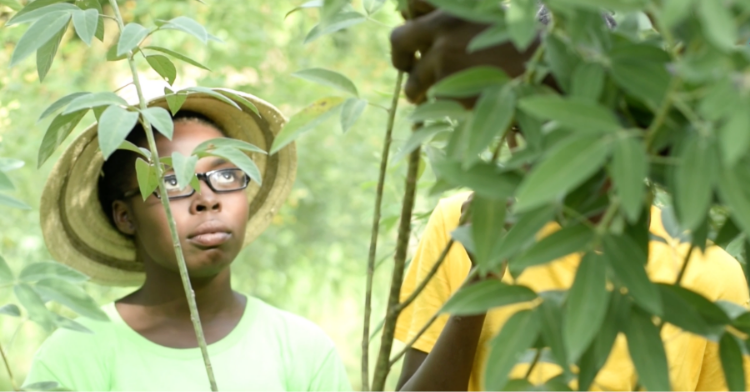Leveraging Local Knowledge to Combat Drought
- Nadine Dominique

- Sep 20, 2023
- 3 min read
Updated: Dec 2, 2023
I'm Nadine Dominique, director of the Organization for the Betterment of Cap-Rouge, a grassroots Haitian nonprofit which is partnering with Cultural Capital Haiti to promote reforestation and food forestry in the mountainous rural community we call home.
The last time I posted, we had been experiencing an unprecedented four-month drought here in Cap-Rouge. In fact it, the drought ended up lasting eight months. We had just a couple of rains right after the last post, and then barely anything for another four months. It was an incredibly difficult time for the community.
Because we were seeing this effect of climate change so obviously increasing, we decided to prioritize building a cistern with a water catchment system, so we would be able to collect and store rainwater when it does come.
So we found a team of very knowledgeable and capable builders in our community, who really know how to build good cisterns. These guys have a deep knowledge of local terrain and locally-sourced building materials, which proved to be key to the success of the project.

They started by digging a large, square pit toward the edge of our land, 10 feet deep and 15 feet on each side. They uncovered a lot of stones as they were digging, which were perfect for building strong side walls, so we set those aside and incorporated them at a later stage in the construction. In the end, we only had to buy a small quantity of stones from our neighbors to complete the structure.

It was really important to us that we use the rock and the sand from our own land to minimize costs, because transporting materials up the mountain road to Cap-Rouge can be difficult and expensive. We used as much local wood for the reusable concrete molds as possible, though we also had to rent some from town. From town we also bought steel rebar and cement, as well as one truckload of black sand to mix with the local white sand for the strongest possible concrete mix. Finally, we had to buy a few dozen concrete blocks from town to make a water-collecting crown to line the roof. But being able to source the bulk of the materials from the local area made a huge difference. The community really came together to make sure we had what we needed.

Our initial plan had been to hire a professional team from Port-au-Prince to do the work and it was estimated that it would cost around $16,000. But with the local team that has expertise in the area, who understand how to source materials locally, it cost us only $5600! This cost-saving was what allowed us to make the plan a reality, not just a dream.

We now have a 15,000 gallon capacity, which I have no doubt will see us through the coming dry season, even if we have another drought like this past year’s. Before this we were operating with a storage capacity of only 1200 gallons from two plastic storage containers, so the new cistern represents a huge increase for us. It means that our seedling distribution operation won’t need to shut down when it’s needed most, and that we can continue to water the trees growing on our own land throughout the year to keep building our model food forest. It also means that we will have extra water to share with our neighbors during any future drought, so that they can see to their basic household needs when their own cisterns run dry.

The whole process has been a beautiful experience because it revealed the amount of knowledge that the population has. Normally people don't build cisterns this big up in Cap-Rouge, but these guys were able to up-scale and adapt, and to create a structure not just inexpensively with local materials but in a fantastically short amount of time. From breaking ground to capping the roof took only two and a half weeks!

This entire project was a community effort. The builders were from the community. The woman who cooked them meals was from the community, as was the food she cooked. On the final day of construction we had a big feast where we invited all the neighbors. We made a batch of local coffee and offered it to the land and to the spirits. It was beautiful.
Now that the rains have finally begun falling again, our beautiful cistern is already collecting water! It’s really fantastic to see.
––Nadine Dominique
Director, Organization for the Betterment of Cap-Rouge




Comments